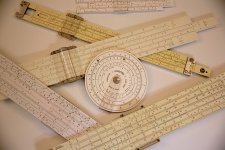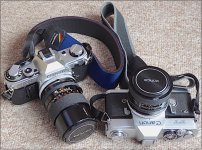- Messages
- 728
- Name
- Mark
- Edit My Images
- Yes
I've lately been GASing for a Fujifilm, something like the X100V, X-E4, X-T3, X-T30 etc etc. Generally speaking, a retro-style, small camera for street/family/travel with the thought that it should last many many years that maybe even (my) children would eventually grow into it.
These are not 'cheap' cameras (I know I know, there are pricier things like Nikon's D6, but still...)
Usually you hear the "invest in lenses because they last, camera bodies get replaced"
I have a few film cameras (NIkon EL, F90x, some Zenits) from my parents and other sources, but these are 'timeless' bodies and a few of my lenses are still compatible but even the newer Nikon stuff is compatible throughout.
But I look at something like the X100V which has a fixed prime lens and wonder will that be something I can pass down to children in 20-30 years. Will it still be relevant? Will it last physically? What are the changes it might need an LCD replacement and will those be replaceable? Could an X100V be the FM3a of the digital world? Or do you approach modern digital stuff as 'consumable'?
This discussion came about after speaking with a friend that if we're to buy something really nice, like the X100V (or even things like a Leica), that it should last maybe even a generation...or two. But is that viable in today's world especially with companies going mirrorless and lenses changing and mounts?
These are not 'cheap' cameras (I know I know, there are pricier things like Nikon's D6, but still...)
Usually you hear the "invest in lenses because they last, camera bodies get replaced"
I have a few film cameras (NIkon EL, F90x, some Zenits) from my parents and other sources, but these are 'timeless' bodies and a few of my lenses are still compatible but even the newer Nikon stuff is compatible throughout.
But I look at something like the X100V which has a fixed prime lens and wonder will that be something I can pass down to children in 20-30 years. Will it still be relevant? Will it last physically? What are the changes it might need an LCD replacement and will those be replaceable? Could an X100V be the FM3a of the digital world? Or do you approach modern digital stuff as 'consumable'?
This discussion came about after speaking with a friend that if we're to buy something really nice, like the X100V (or even things like a Leica), that it should last maybe even a generation...or two. But is that viable in today's world especially with companies going mirrorless and lenses changing and mounts?





